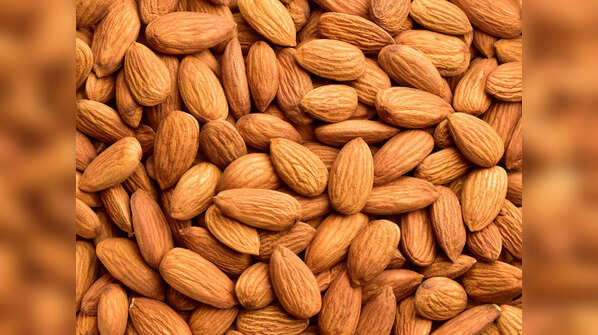Peel or without peel: Which is the best way to have almonds for maximum nutrition
The Optimal Way to Consume Almonds for Maximum Health Benefits
Almonds, celebrated for their dense nutrient profile, offer a wealth of health advantages. Abundant in monounsaturated fats that promote heart health, they also aid in regulating cholesterol levels. A modest serving of approximately 28 grams provides 6 grams of protein, 3.5 grams of fiber, and a substantial amount of Vitamin E, essential for skin and immune system function.

Additionally, almonds are rich in magnesium, vital for nerve and muscle function, and contain smaller quantities of calcium, iron, and B vitamins. Research indicates that regular almond consumption enhances endothelial function, reduces LDL levels in adults, and decreases the risk of cardiovascular ailments. It has also been observed that consuming almonds before meals helps lower post-meal blood glucose levels, manage body weight, and even reverse prediabetes in certain individuals. The central question remains: Is it better to consume almonds with or without their peel? Let's explore this further.
Almonds with Peel: Pros and Cons
The brown skin of almonds is a source of potent antioxidants like polyphenols and flavonoids, which combat oxidative stress and inflammation.

The peel also contributes to the nut's overall fiber content, promoting healthy digestion, and the antioxidants in the skin provide cardiovascular benefits.
However, the peel contains tannins and phytates that can hinder nutrient absorption, especially of iron, zinc, and calcium. In some cases, almond skin can be difficult to digest and may cause stomach discomfort.
Almonds without Peel: Benefits and Drawbacks
Soaking almonds and removing their skin softens their texture, making them easier to chew and digest.

Soaking may also reduce anti-nutrients like phytic acid, enhancing the bioavailability of minerals. Peeled almonds are gentler on the gut, facilitating better digestion.
On the other hand, removing the skin eliminates a significant portion of antioxidants and polyphenols. Removing the skin slightly reduces the fiber content compared to whole almonds.
The Verdict: Which is Best?
Those aiming to maximize their intake of antioxidants and fiber should opt for almonds with the peel.

Individuals prioritizing better digestion and mineral absorption should choose soaked and peeled almonds. Experts suggest a balanced approach, incorporating both types of almonds into your diet on alternate days.
Newer articles
Older articles
-
 Aamir Khan’s Sitaare Zameen Par picks up momentum on release day as last-hour bookings surge past 10,000 tickets
Aamir Khan’s Sitaare Zameen Par picks up momentum on release day as last-hour bookings surge past 10,000 tickets
-
 Vivek Oberoi reveals how shifting to Dubai helped him build a Rs 1200 crore real estate empire: ‘This feels more like home now’
Vivek Oberoi reveals how shifting to Dubai helped him build a Rs 1200 crore real estate empire: ‘This feels more like home now’
-
 'Would be remarkable to choose someone else if their last knock was a 170'
'Would be remarkable to choose someone else if their last knock was a 170'
-
 Jaya Bachchan believes Amitabh Bachchan “gave a better performance” than her in ‘Mili’ - Exclusive
Jaya Bachchan believes Amitabh Bachchan “gave a better performance” than her in ‘Mili’ - Exclusive
-
 Amitabh Bachchan calls working with son Abhishek Bachchan his 'greatest blessing'
Amitabh Bachchan calls working with son Abhishek Bachchan his 'greatest blessing'
-
 Are we living inside a black hole? NASA’s James Webb findings stun scientists
Are we living inside a black hole? NASA’s James Webb findings stun scientists
-
 Sunjay Kapur’s sister Mandhira shares rare selfie after his funeral: 'We are incomplete without you'
Sunjay Kapur’s sister Mandhira shares rare selfie after his funeral: 'We are incomplete without you'
-
 ‘City killer’ asteroid may hit the Moon in December 2032 could threaten satellites around Earth; experts warn
‘City killer’ asteroid may hit the Moon in December 2032 could threaten satellites around Earth; experts warn
-
 Peel or without peel: Which is the best way to have almonds for maximum nutrition
Peel or without peel: Which is the best way to have almonds for maximum nutrition
-
 IND vs ENG: Ben Stokes bursts out laughing after Rishabh Pant smacks him down the ground for four - watch
IND vs ENG: Ben Stokes bursts out laughing after Rishabh Pant smacks him down the ground for four - watch